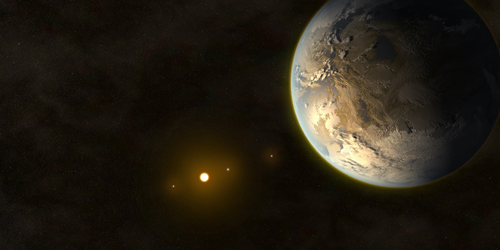Bringing Exoplanets into View
For the past six years, superconducting photon detectors have captivated Nicholas Zobrist, a physicist at the University of California, Santa Barbara. These detectors, which pick up photons via the disturbances they create in a superconductor’s properties, have applications in fields ranging from biology to cosmology to planet hunting. But to be useful for the latter purpose, Zobrist says the devices need an upgrade. Now, he and his colleagues have demonstrated a superconducting detector that has half the energy resolution of previous devices [1]. Zobrist says that their design is simple to make and should be compatible with previously developed technology.
The type of device created by Zobrist and his colleagues is called a microwave kinetic inductance detector (MKID). Typically, MKIDs consist of a superconducting circuit that sits on some substrate. When a photon hits the circuit, it can create phonons. These phonons can travel into the substrate, taking energy with them, which leads to uncertainty in the measurements of the incoming photons.
The team found that they could fully block the transmission of high-energy phonons by placing a phonon-blocking layer between the superconducting circuit and the substrate. This change translated to a doubling of the spectral resolving power, or a halving of the uncertainty of the photon energy measurements.
While the design change may seem obvious in hindsight, Zobrist notes that the importance of these phonons in limiting detector resolution has only recently been recognized. The simplicity of the change will make it easier to implement in already built detectors. “It is not very often that performance enhancement of this magnitude happens,” he says. “It has been very gratifying to see our hard work pay off.”
–Katherine Wright
Katherine Wright is the Deputy Editor of Physics Magazine.
References
- N. Zobrist et al., “Membraneless phonon trapping and resolution enhancement in optical microwave kinetic inductance detectors,” Phys. Rev. Lett. 129, 017701 (2022).




